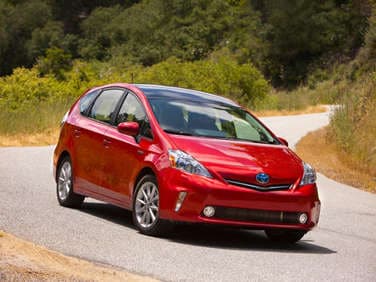Recent Articles
Popular Makes
Body Types
10 Things You Need To Know About The 2012 Toyota Prius V
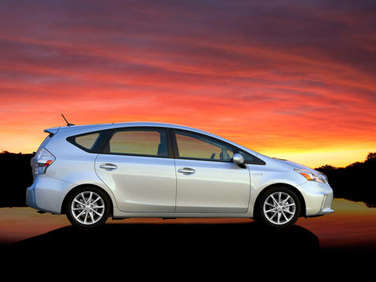
What's more appealing to hybrid car fans than the ever-popular Toyota Prius hatchback? How about a more practical - and more comfortable - version of the gasoline / electric automobile called the Toyota Prius V. The 2012 Toyota Prius V is a new member of Toyota's hybrid family and one that aims to offer battery-powered car aficionados the chance to take advantage of wagon-like capabilities while still enjoying the excellent fuel economy that has become the Prius' calling card.
Let's take a look at 10 things you need to know about the 2012 Toyota Prius V.
01. The 2012 Toyota Prius V Features The Same Prius Hybrid Drivetrain
The 2012 Toyota Prius V borrows its Hybrid Synergy Drive system from the smaller Toyota Prius hatchback. This means that the Prius V is motivated by a 1.8-liter, four-cylinder gasoline engine that is mated with not just one, but two electric motors. Together, the hybrid system puts out 134 horsepower and 150 lb-ft of torque, managed by a continuously-variable automatic transmission. The vehicle's Hybrid Synergy Drive also features three different driving modes: Power, Normal and Eco. Each is accessible at the push of a button, and remaps the vehicle's throttle response and general engine characteristics in order to either offer better acceleration or enhance fuel mileage.
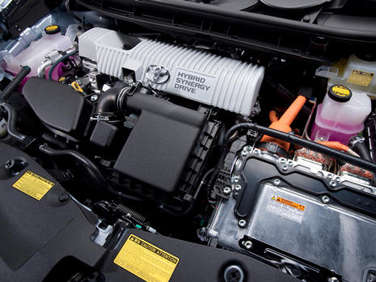
02. The 2012 Toyota Prius V Offers Excellent Fuel Economy
Toyota worked hard to ensure that the larger 2012 Toyota Prius V didn't suffer significantly in terms of fuel economy when compared against the more compact standard Prius. The use of lightweight materials managed to keep the longer and taller Prius V's weight gain to just 232 lbs, and fuel economy for the wagon-like hybrid checks in at 44-mpg in stop and go driving and 40-mpg during highway cruising. Combined mileage is rated at 42-mpg, which although not quite as overwhelming as the smaller Prius' performance makes it considerably more efficient than most of its similarly-sized wagon and hatchback competitors.
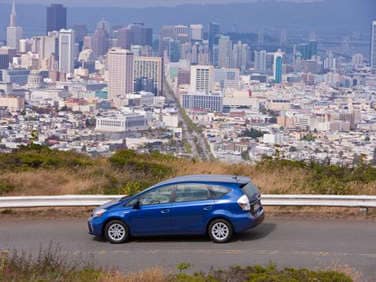
03. The 2012 Toyota Prius V Comes With More Passenger Room
One of the main advantages gained by the 2012 Toyota Prius V when it saw its platform stretched by six inches (in terms of overall length) was a dramatic increase in interior volume. The Toyota Prius V now enjoys almost SUV-like levels of passenger room, especially for rear passengers who benefit from a sliding seat that can move forwards or backwards in order to configure the vehicle's cabin for either cargo hauling or people moving duties. 35.9 inches of total rear leg room elevate the Toyota Prius V above larger vehicles such as the Honda CR-V and help to make the new edition of the hybrid more family-friendly than its compact hatchback sibling.
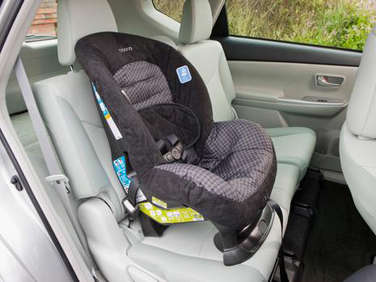
04. The 2012 Toyota Prius V Provides Substantial Cargo Capacity
The 2012 Toyota Prius V's generous dimensions also translate into a considerably enlarged cargo capacity. Looking behind the rear row reveals 34.3 cubic feet of space between the seatback and the cargo hatch, and folding down that same row opens up a whopping 67.3 cubic feet of total interior room. Not only does this figure represent a 60 percent improvement over the regular Prius, but it allows the Toyota Prius V to claim a larger cargo hold than sport-utility vehicles like the Chevrolet Equinox or the Ford Escape. The hybrid also offers a completely flat load floor, spread out over its three-inches of additional wheelbase (when compared against the Prius hatchback).
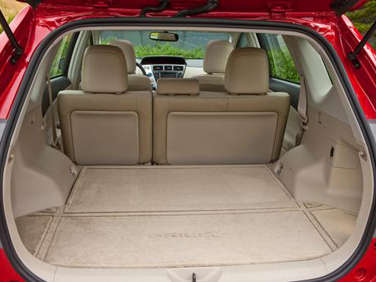
05. The 2012 Toyota Prius V Benefits From An Eco-Friendly Design
The 2012 Toyota Prius V doesn't just count on its hybrid drivetrain to help make it a green transportation option for ecologically-conscious drivers. The Toyota Prius V also features an exterior design that has been judiciously tweaked in order to maximize aerodynamics and help it slip through the air with as little resistance as possible. Both the inside and outside of the automobile make extensive use of recycled materials, and its available panoramic sunroof substitutes a lightweight resin product in place of using glass, while similarly low-mass stereo system draws only 20 percent of the power of that found in the Prius hatchback.
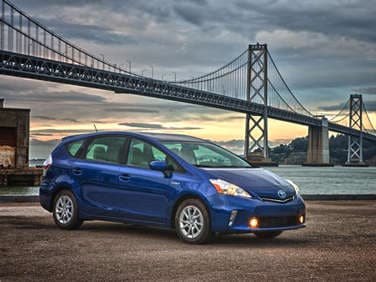
06. The 2012 Toyota Prius V Debuts Toyota Entune
The 2012 Toyota Prius V is the first Toyota in North America to feature the brand's new Entune multimedia and communications interface. Entune is capable of linking with smart phones and other mobile devices in order to introduce internet connectivity to the Toyota Prius V. The system provides access to the Microsoft Bing search engine, online music streaming services iheartradio and Pandora as well as a number of other web services such as MovieTickets.com. Entune is also capable of understanding voice commands, which is meant to reduce instances of distracted driving while offering hands-free calling and full control over music and information services.
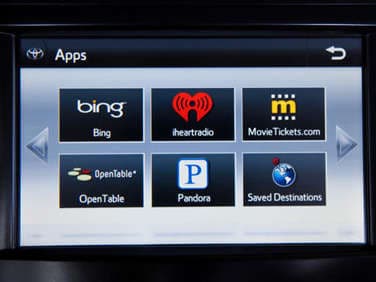
07. The 2012 Toyota Prius V Displays Classic Styling
Stylistically, the 2012 Toyota Prius V does not stray too far from the established Prius design language. It's not until one is up close and personal with the new Prius V that it becomes possible to judge just how much taller the vehicle is compared to the Prius hatchback and fully absorb the changes that its additional length have made to the hybrid's package. From the front, the Toyota Prius V adopts a very similar fascia and headlight arrangement to the smaller Prius, while the rear hatch offers a spoiler and a larger opening than current Prius owners are used to. Inside, Toyota has made an effort to open up the vehicle's cabin, and it has also graced the compartment with a few more soft touches to help balance out the wagon's stiffer plastic bits.
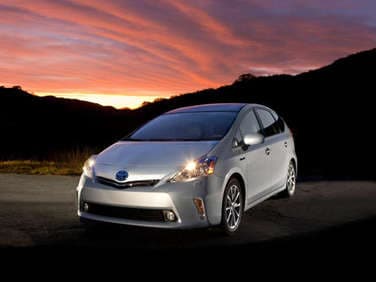
08. The 2012 Toyota Prius V Comes In Three Trim Levels
The 2012 Toyota Prius V is offered in Two, Three and Five trims. The base Prius V Two comes with LED headlights and tail lights, 16-inch wheels, automatic climate control and power windows and door locks. The Prius V Three upgrades the stereo system to include Entune and a navigation system (accessible via voice controls or a touch-screen LCD) and adds tilt steering, while the Prius V Five expands the Smart Key system to three doors (from one), adds heated leatherette seats and makes Toyota's premium navigation system, a JBL sound system and a panoramic sunroof available as options.
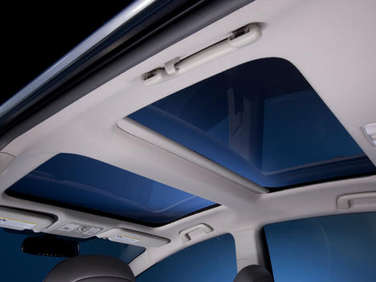
09. The 2012 Toyota Prius V Provides A Pleasant Driving Experience
The 2012 Toyota Prius V is not significantly slower off of the line compared to its lighter Prius cousin, despite the weight disparity between the two vehicles. To compensate for the fact that the heavier Prius V did not receive a power bump, the wagon makes use of a shorter final drive ratio that keeps acceleration in the 10-second range when timing its zero-to-60-mph time. The vehicle's longer wheelbase and increased heft also help to improve its at-speed stability, making the Prius V less skittish over broken pavement and helping it to hold its own against strong gusts of wind out on the highway.
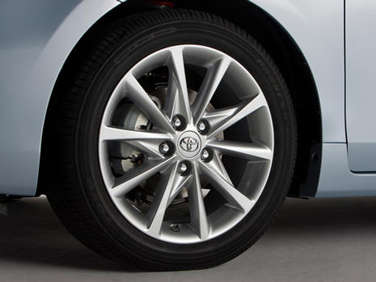
10. The 2012 Toyota Prius V Is Part Of The New Prius Brand
Part of the reason as to why the 2012 Toyota Prius V is such a significant vehicle for the automaker goes beyond its increased cargo capacity, spacious passenger room and solid fuel economy. The Toyota Prius V is actually the first salvo in Toyota's strategy for expanding the Prius nameplate into its own sub-brand, with the goal of creating a stable of hybrid automobiles targeted at a variety of different driving niches. In addition to the Prius V, a plug-in version of the Prius hybrid is also due to hit the streets shortly, to be followed by the Prius c which will offer a subcompact footprint aimed at city car fans.
